Here's How to Cook Farro perfectly every time! This superfood grain is high in protein and fiber with a delicious nutty flavor and chewy texture, great for salads, soups and more. Pair it with my Mediterranean flavor farro salad!
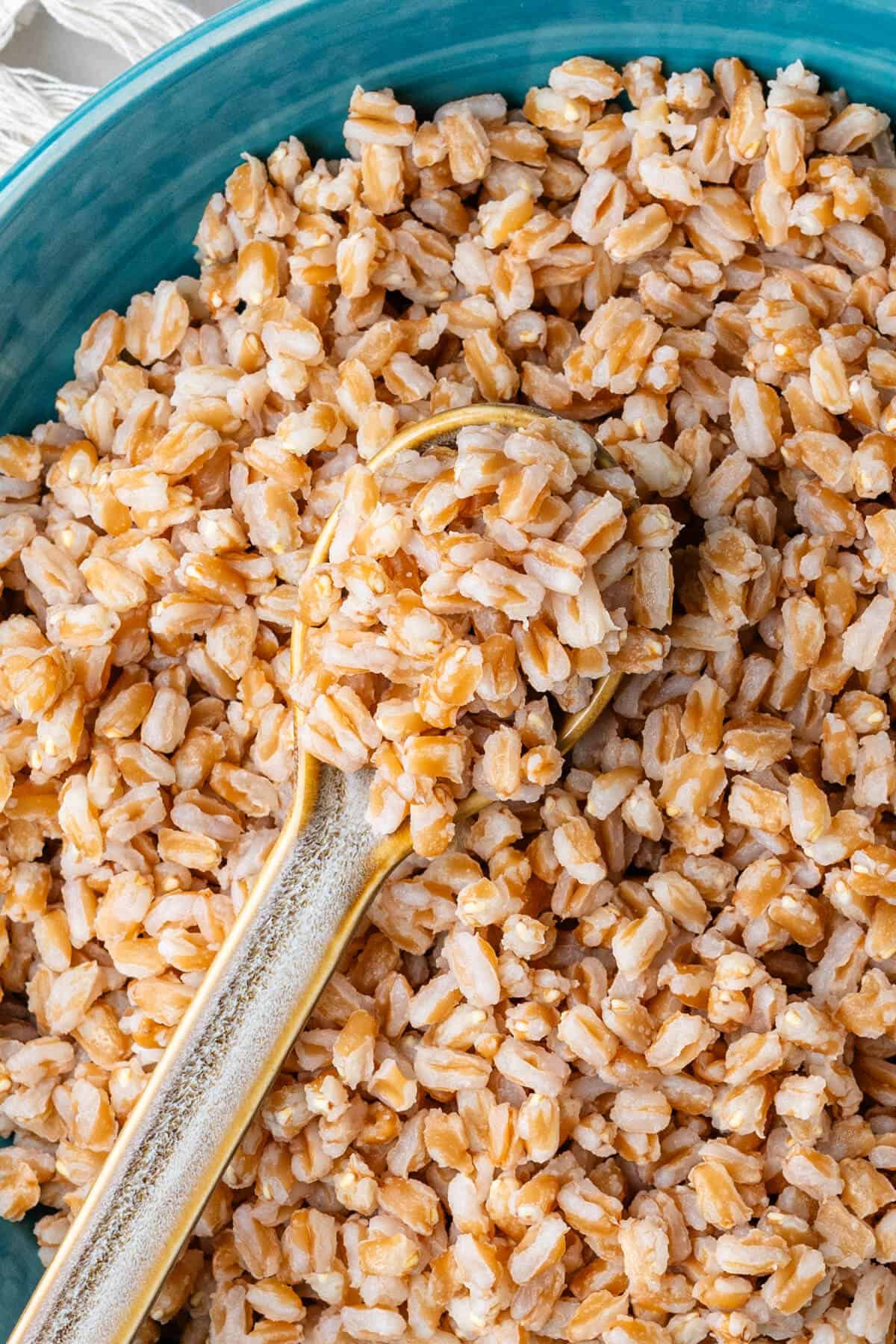
Have you tried farro?? It’s actually one of my favorite grains! If you haven’t tried it before, its a Mediterranean whole grain similar to barley and has a delicious chewy texture. Fun fact, many years ago far before starting my blog, I would regularly order a farro salad from my local cafe, only for the farro. I wasn't familiar with it so much back then, but I loved the texture and the way it soaked up the salad dressing. I then started experimenting with how to cook farro at home and different dishes to add it to and I never looked back. Here I'll teach you how easy it is to cook perfect farro every time!
Not only does it taste delicious, but an added bonus is that farro is so nutritious too. Its a superfood high in protein, fiber, magnesium and so many other health benefits. It's also considered a complex carbohydrate, so it keeps you fuller for longer and gives you energy. It's versatile and you can eat it in many different ways, from adding it to salads, soups, and even power bowls such as my Greek bowl or salmon bowl. You can also substitute it for rice with other dishes like curries and stews.
Cooking the farro is actually really easy with simple steps. In a nutshell, its cooked in a similar way you cook pasta. Where its boiled in a pot of salted water and cooked until al dente. I also share a few tips so that it doesn't get too mushy or soft, because we don't want mushy farro. The best part is the texture! If however you want to add farro to soups, I love to cook it in the broth which adds extra creaminess plus the farro soaks up the yummy flavors. I've experimented and tried it in my Italian minestrone soup and Persian noodle soup which I know isn't traditional, but both worked so well.
I love making a batch for meal prep and keep it in the fridge so its ready to add to different meals for a quick weeknight dinner. I alternate doing this with different grains every week from basmati rice and even quinoa. That way its always ready to go, all I do is cook the protein such as sticky tofu or salmon bites with some veggies and even on the side of cauliflower steaks...yum! Or I can just add the farro to my salad for lunch.
There are 3 different types of farro you can find. From whole farro which is at its most natural form, semi- pearled farro and pearled farro. The main difference is the cooking time as whole farro takes the longest to cook and pearled farro is the quickest. The nutrient levels also differ with whole farro being highest in nutrients. I've broken it down a little more below.
Table of Contents
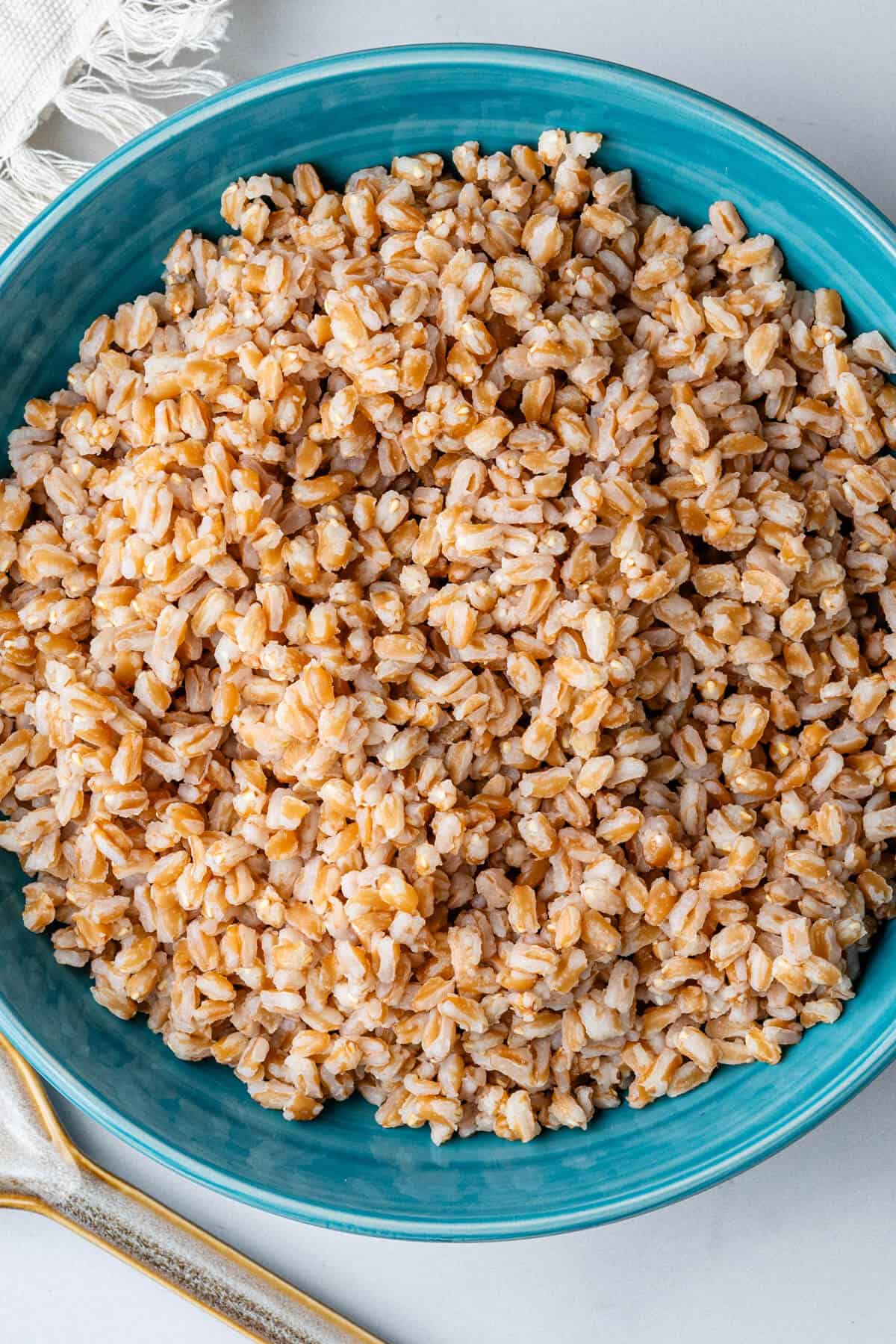
What makes this recipe special
- Easy to Cook: Cooked over the stove top with simple steps
- Healthy & Nutritious: Superfood packed with protein, fiber, and many nutrients
- Versatile: Great to add to salads, soups, stews, grain bowls, or as a side dish
- Great Texture: Farro has a chewy bite that tastes great
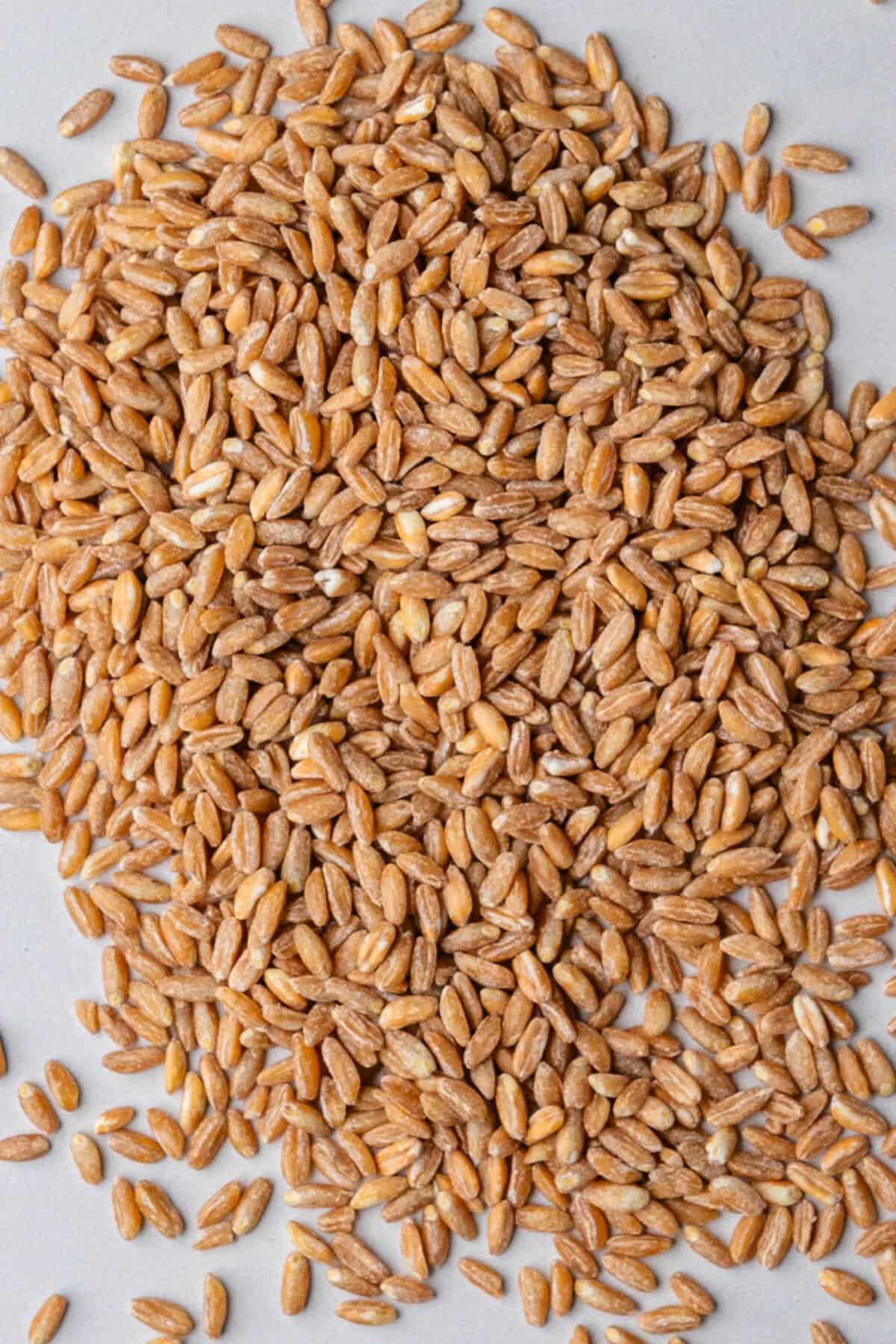
What is Farro?
Farro is actually an ancient whole grain that has been in Mediterranean and Middle Eastern cuisines for centuries. It contains many nutrients including protein, fiber, magnesium, zinc, antioxidants and more. Once cooked, it has a chewy texture and a nutty flavor and a great alternative to refined grains. Its similar to barley, buckwheat and brown rice in terms of look and texture.
Perfect to add to salads, soups and even delicious to enjoy on its own as a side dish.
The actual name farro is Italian for “ancient wheat grain” and used to describe three different grains:
- Einkorn: known scientifically as Triticum monococcum
- Emmer: known scientifically as Triticum dicoccum
- Spelt: known scientifically as Triticum spelta
The most common farro found in the US and Europe is emmer wheat. There are also 3 different types of farro, below is more detailed information on each.
Different Types of Farro
- Whole farro is the least processed and retains the entire bran, germ, and endosperm. It has the most nutrients but takes the longest to cook, usually around 30-40 minutes unless pre-soaked. Since it's a true whole grain, it provides the most fiber and a more chewier texture
- Semi-pearled farro where part of the bran is removed, which reduces the cooking time to about 20 minutes. It still retains a good amount of fiber and nutrients, but not as high as whole farro
- Pearled farro has had all of its bran removed, making it the fastest to cook in about 15 minutes. While it’s lower in fiber, it still contains nutrients and considered a hearty grain. Its the most convenient so its usually easier to find in grocery stores
So in a nutshell, choose whole grain farro for the most nutrients, but if short on cooking time semi-pearled or pearled will be more convenient.
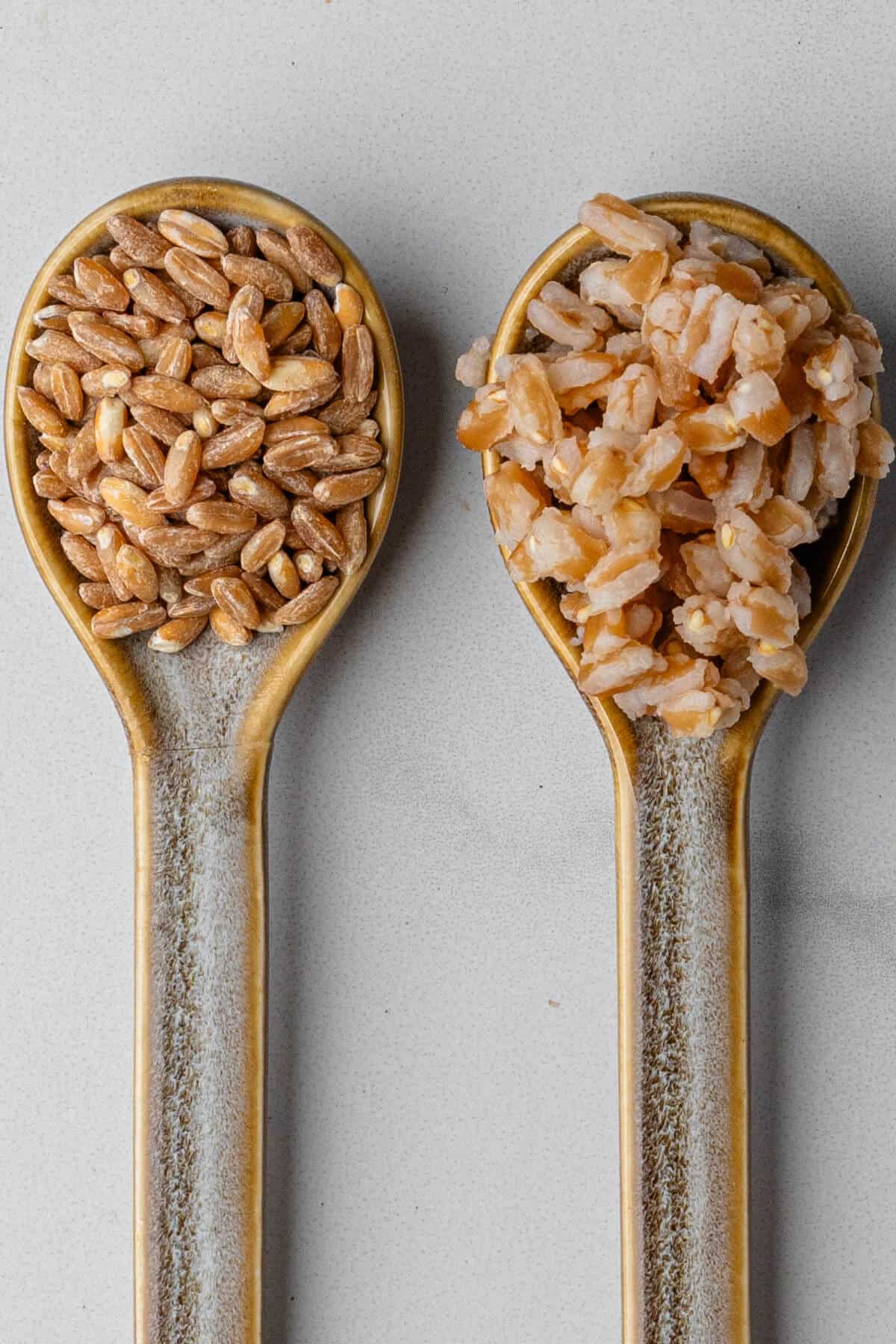
Ingredients and Substitutions
- Farro is of course the star packed with nutrients, protein, fiber, zinc and more. This ancient whole grain has a nutty flavor and chewy texture, making it a great alternative to quinoa, brown rice, barley, or even wild rice. Choose from whole farro, semi- pearled or pearled farro which have different cooking times and nutrient levels
- Water and salt is the standard way to cook farro as it boiled similar to a pasta cooking method. You can however use chicken broth or vegetable broth instead for extra flavor. If adding it to soups, simply cook in the soup broth
- Aromatics are optional but you can also add aromatics when you cook the farro including bay leaves or even cumin seeds. You can season farro with a drizzle of extra virgin olive oil with chopped fresh herbs like parsley or basil and optionally garlic for an extra boost of flavor
How to Cook Farro
Cooking farro is super simple and nutritious. Whether its added to salads or serving it as a side, here's how to cook farro perfectly every time. Follow my easy steps below
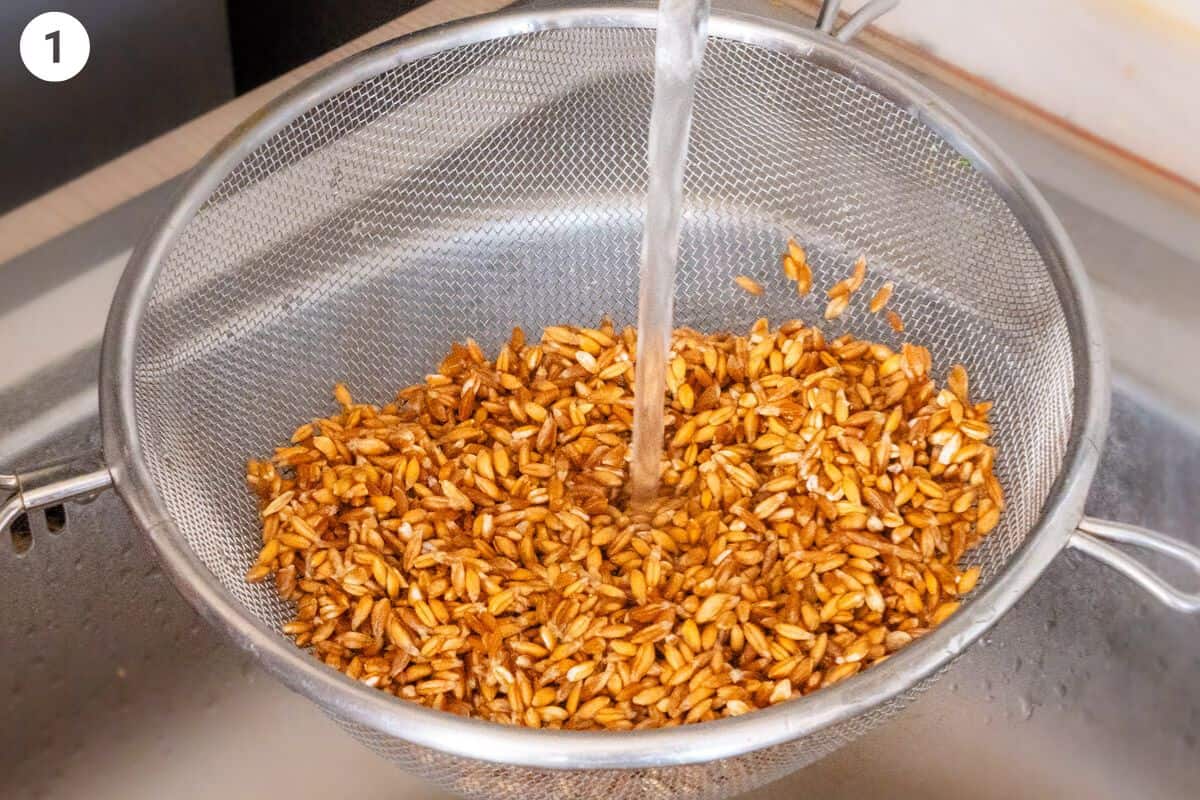
Rinse farro well under cold water using a fine-mesh strainer
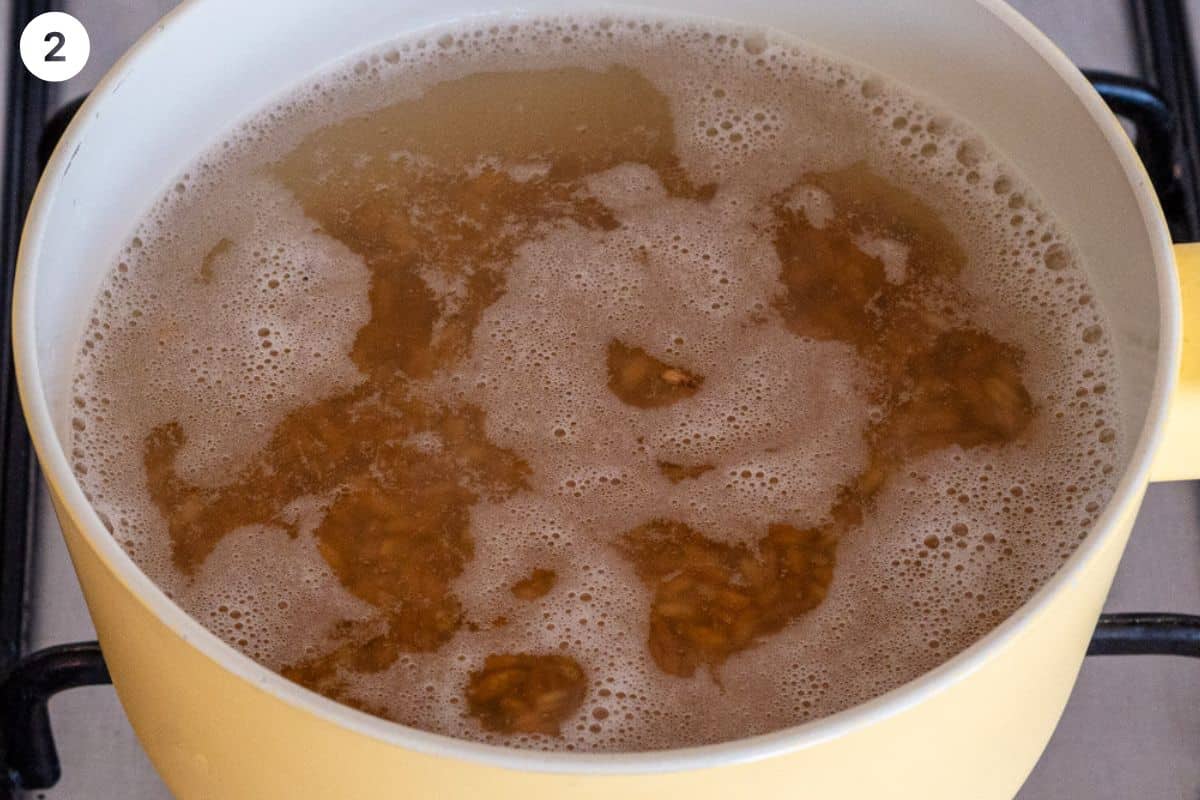
Bring salted water to a boil in a medium pot. Add farro, stir, and reduce to a low-medium heat
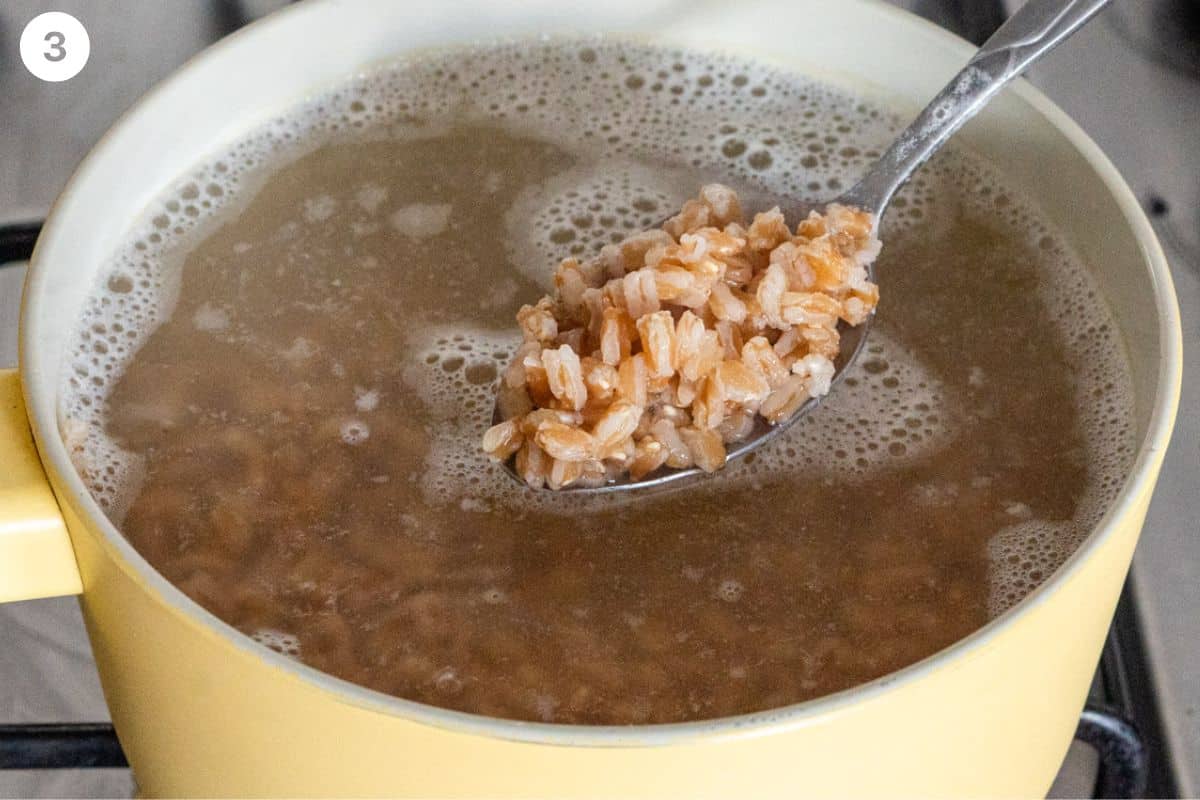
Cook time varies by farro type. Whole (30–40 min), semi-pearled (~25 min), pearled (~15 min). Check your package
Stir occasionally and keep an eye on the water level. Farro is done when plump and slightly chewy
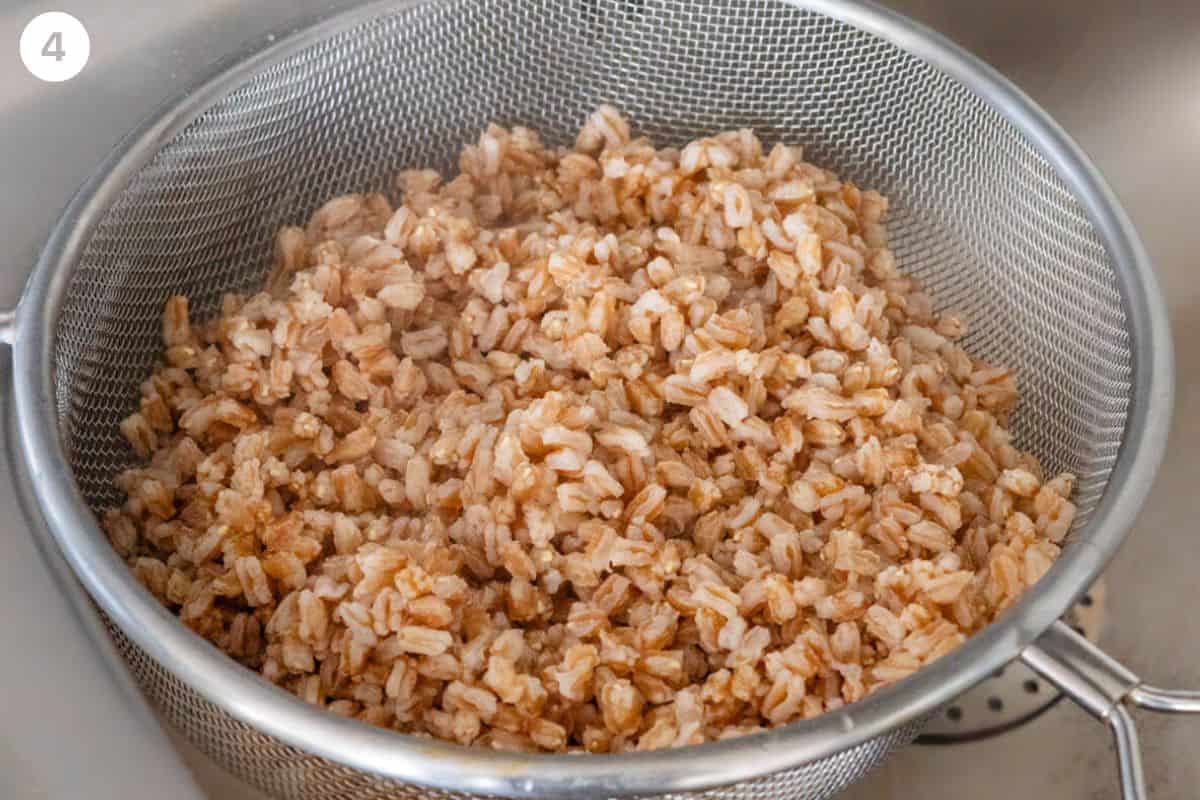
Drain using a colander once cooked
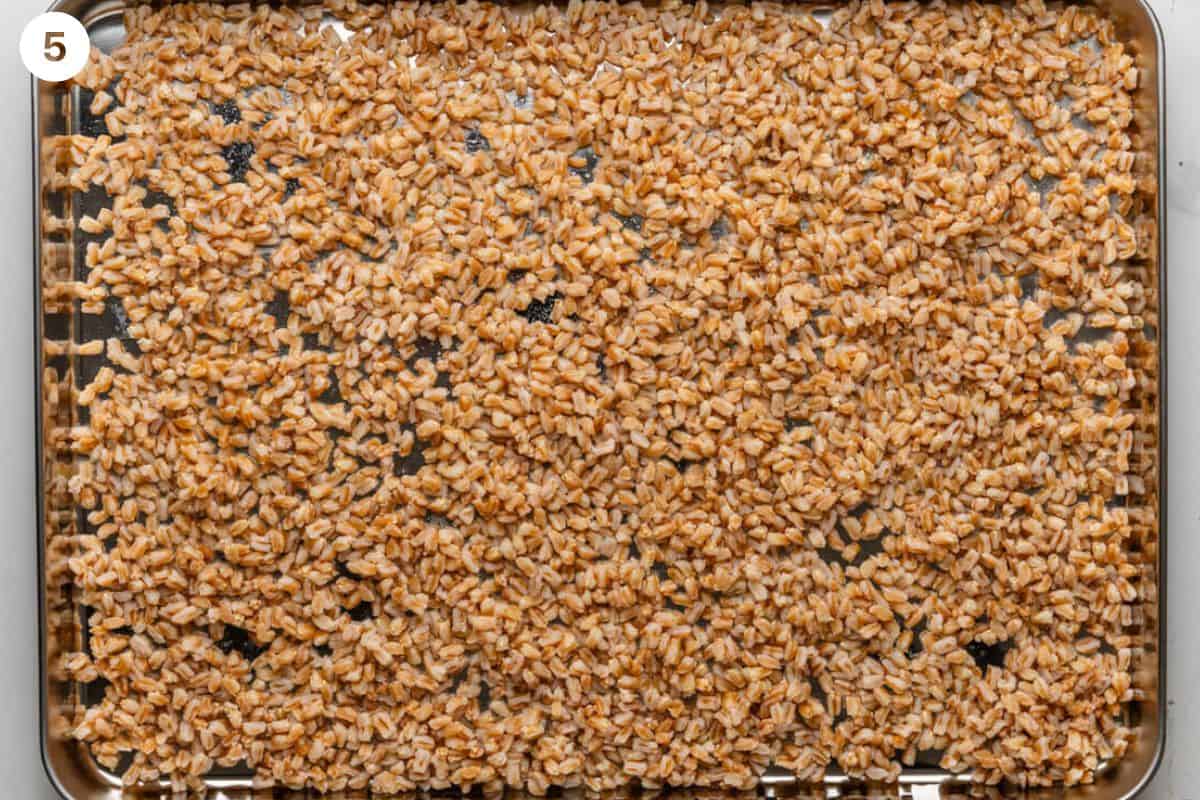
Spread farro on a baking sheet to cool and prevent sticking
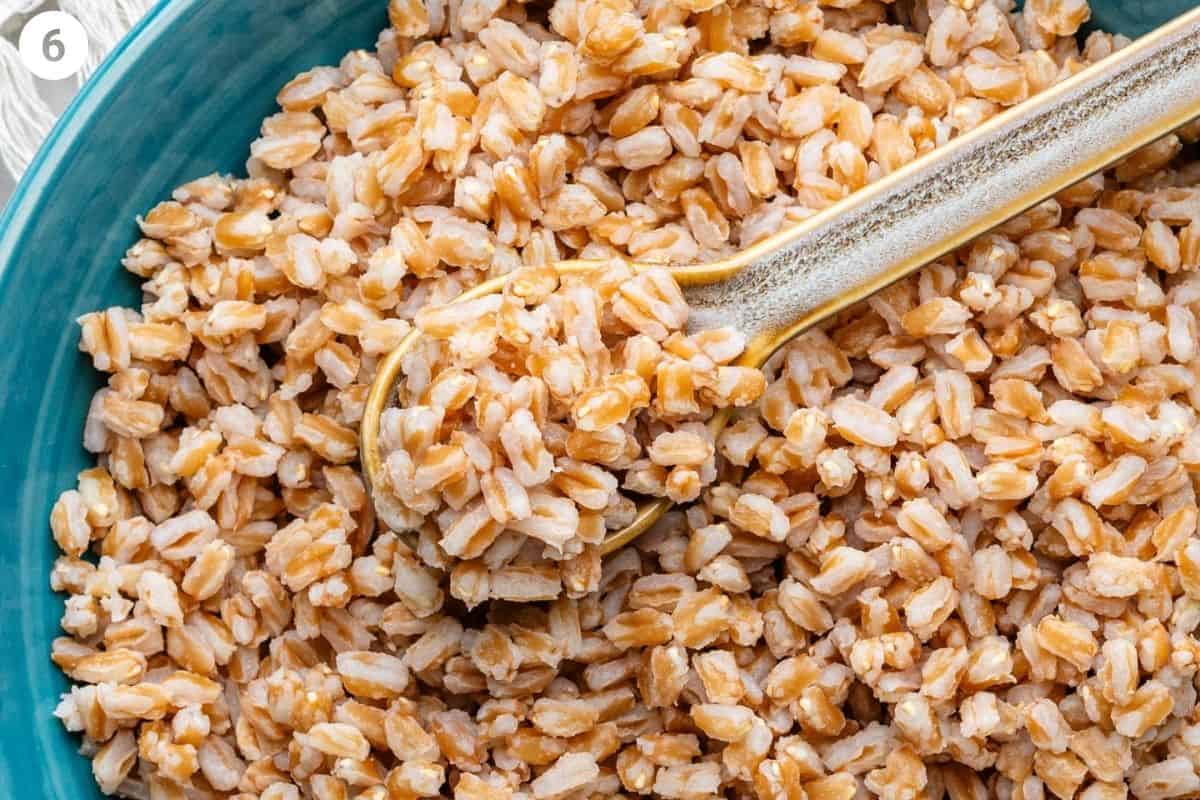
Its ready to use in salads, as a side, or toss with olive oil and herbs before serving
What to serve with Farro?
Farro works well in so many dishes! Here are some of my favorite ways to enjoy it:
- Salads such as farro salad, quinoa salad and lentil salad
- Protein power bowls including my Greek bowls and salmon bowl
- Soups including Italian minestrone soup or Persian noodle soup
- Side dish served warm with a drizzle of olive oil and fresh herbs
- Alongside proteins like kotlet, air fryer salmon or crispy sticky tofu
- Swap for pasta in dishes like creamy orzo or burrata pasta
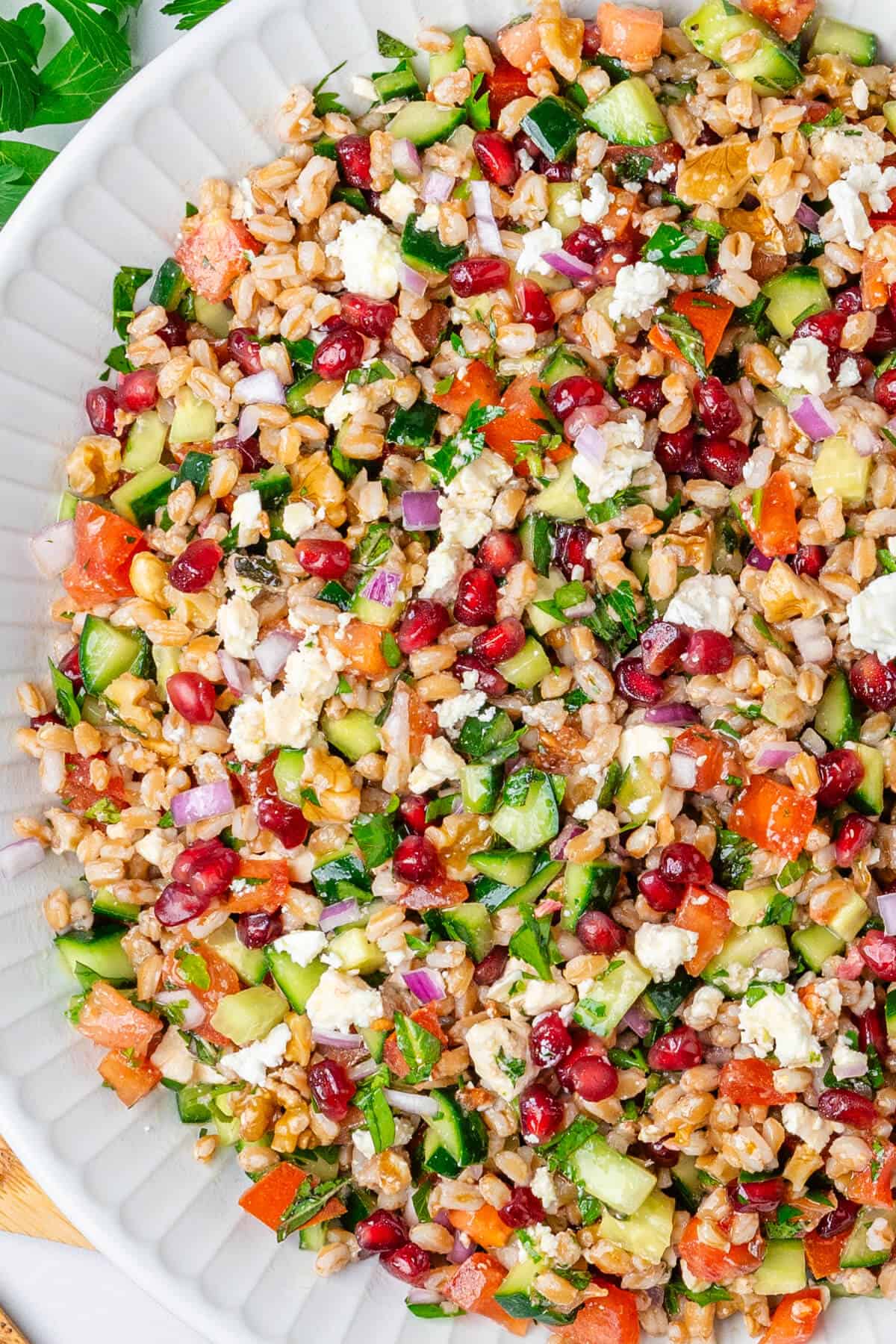
Tips and Tricks
- Always rinse farro before cooking, just like you would with rice, to remove any dust or debris, since it's a dried whole grain
- Soak farro for 30 minutes before cooking to reduce cook time, but this is optional
- Confirm the type of farro on the package for the cooking time. If unsure of the type, use the lowest cooking time and taste it to confirm once cooked to your liking
- Ensure to stir as its boiling from time to time and make sure there is sufficient water as the farro will absorb the water
- Don't skip the final step to spread cooked farro on a baking sheet. This stops it from cooking and the grains from sticking to each other which will get mushy
Storage Instructions
- Store leftovers in an airtight container in the fridge for up to 4-5 days
- If serving warm, reheat over stovetop with a small splash of water or vegetable broth until warmed through - or microwave
- Alternatively enjoy cold or at room temperature in salads or grain bowls
- Freeze leftovers for meal prep, store in a freezer bag or container for 1-2 months. Thaw in the fridge and enjoy cold or reheated as per above
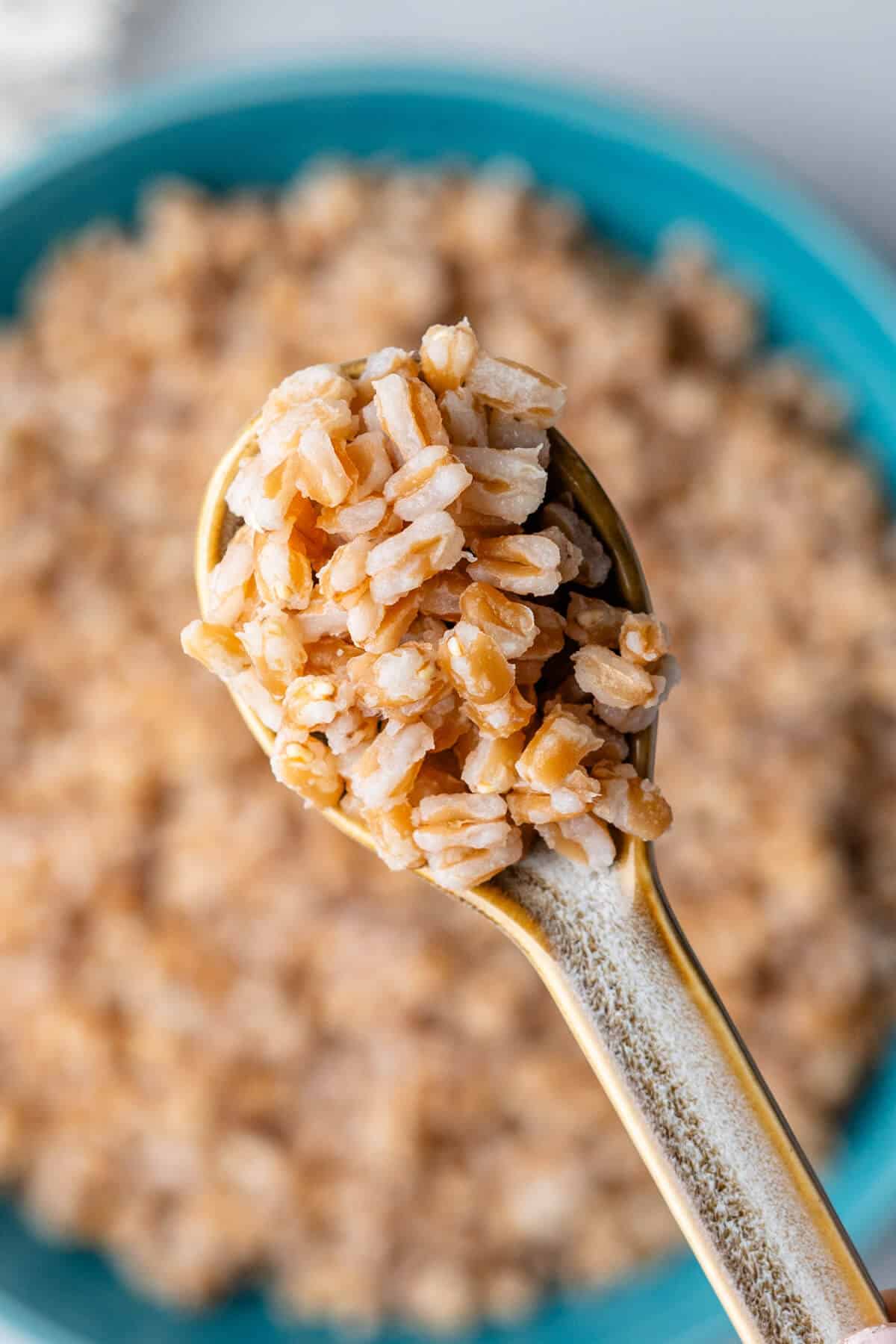
FAQs
Farro is a complex carbohydrate that’s also a great source of protein. Its higher in protein than most grains and makes a wonderful alternative to pasta or rice
For the pasta method, just boil in plenty of water as it does absorb most of the water, then drain when tender and cooked to your liking
Farro is extremely nutritious and high in protein, fiber and other nutrients including magnesium and zinc to name a few
Ensure not to overcook the farro as you want it to have a chewy bite. Also don't skip the recipe step of spreading the cooked farro on a baking sheet to allow it to cool and not stick together
Farro is great in salads similar to adding quinoa, grain bowls, in soups, alongside curries and stews instead of rice, or simply as a warm side dish with protein and veggies

Pairing
These are my favorite recipes to serve with farro:
More Rice and Grains
Looking for other recipes like this? Try these:
I love seeing your creations and remakes, so be sure to rate the recipe, comment and share your photo on Instagram so I can share the love!
Recipe
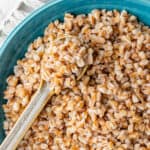
How to Cook Farro (Perfect Everytime!)
Ingredients
- 1 cup uncooked farro
- Water
- Good pinch of salt
Optional Additions
- Simmer with a bay leaf or teaspoon of cumin seeds
- Drizzle of olive oil and chopped fresh herbs
Instructions
- Add the farro to a fine-mesh strainer or colander and rinse well under cold water
- Boil water in a medium pot with a good pinch of salt. Once the water is boiling, add the washed farro and give it a quick stir and simmer slowly over low-medium heat*Cooking duration will depend on the type of farro so ensure to confirm on on the package. Whole farro will need 30-40 minutes, semi-pearled farro will need ~25 minutes and pearled farro will need ~15 minutes
- From time to time, stir the farro while simmering and make sure there is sufficient liquid. Give it a taste to confirm when its cooked. It should be slightly al dente with a soft chewy bite and the farro will become quite plump
- Once cooked to your liking, drain the farro through a colander
- Pour the cooked farro onto a baking sheet or flat platter to cool it down and spread it out with the back of a spoon. This will stop it from sticking to each other and becoming mushy
- Once ready to eat, add the cooked farro to a salad or as a side dish as is, or add a drizzle of olive oil and chopped herbs and enjoy!
Notes
- Farro - always rinse before cooking, just like rice, to remove dust or debris since it's a dried whole grain
- Cooking time - check the package to confirm the type of farro. If unsure, start with the shortest time and taste for doneness
- Cooling - don’t skip spreading the cooked farro on a baking sheet, as this stops the cooking process and prevents clumping or mushiness


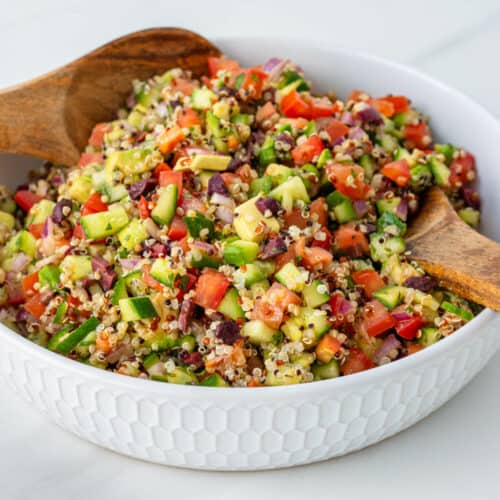
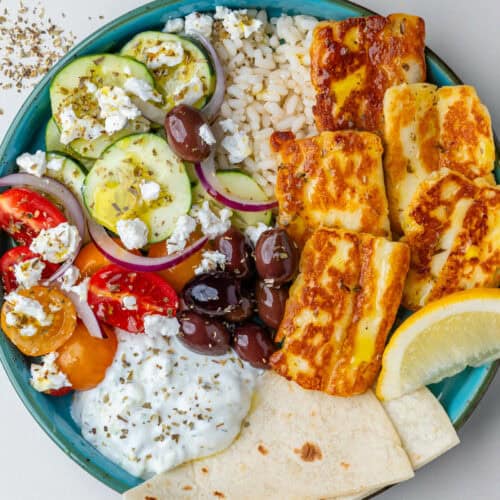
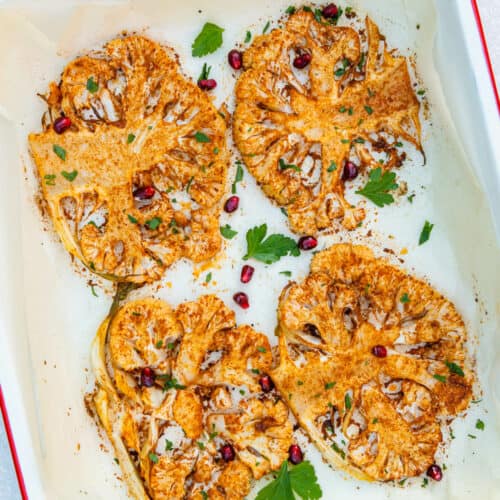
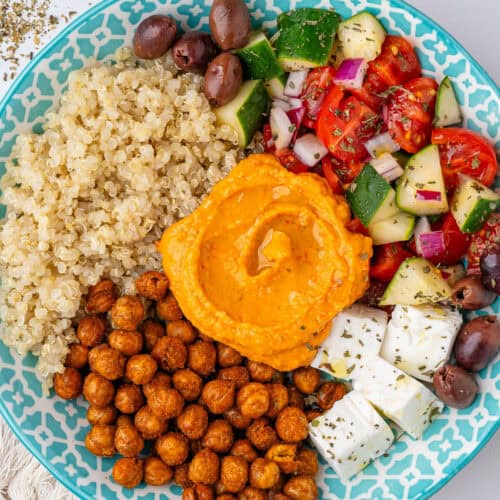
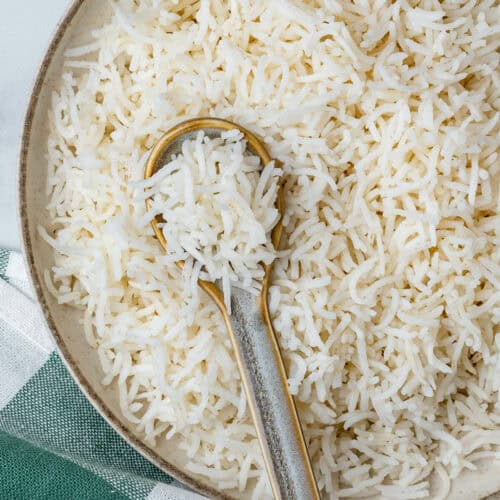
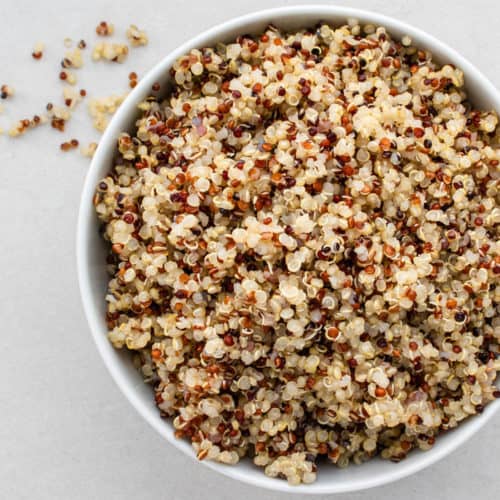
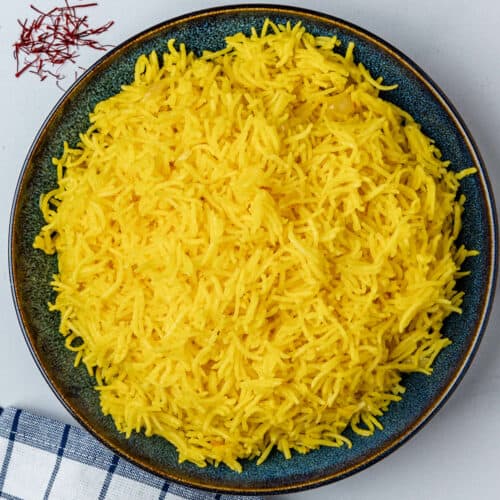
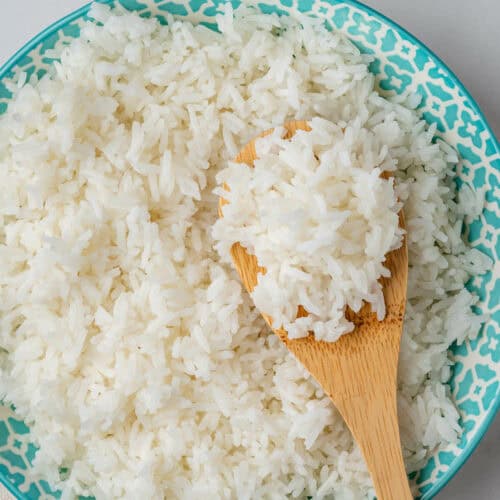
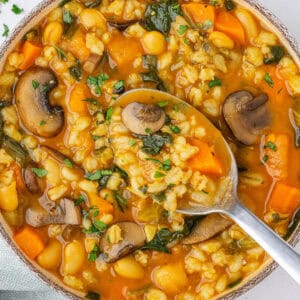
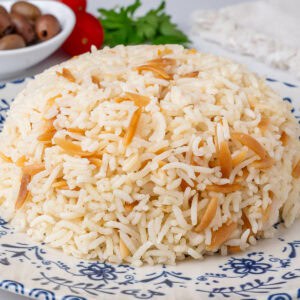
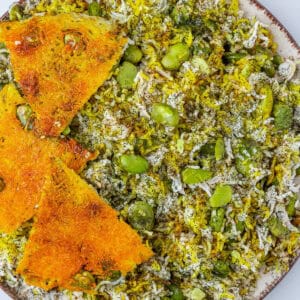
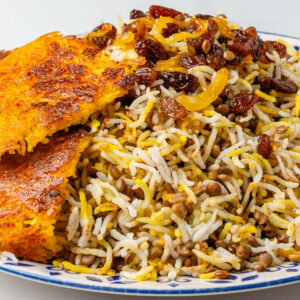
Comments
No Comments